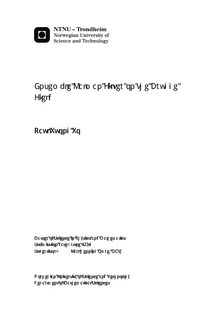Ensemble Kalman Filter on the Brugge Field
Master thesis
Permanent lenke
http://hdl.handle.net/11250/259068Utgivelsesdato
2012Metadata
Vis full innførselSamlinger
Sammendrag
The purpose of modeling a petroleum reservoir consists of finding the underlying reservoir properties based on production data, seismic and other available data. In recent years, progress in technology has made it possible to extract large amount of data from the reservoir frequently. Hence, mathematical models that can rapidly characterize the reservoir as new data become available gained much interest. In this thesis we present a formulation of the first order Hidden Markov Model (HMM) that fits into the description of a reservoir model under production. We use a recursive technique that gives the theoretical solution to the reservoir characterization problem. Further, we introduce the Kalman Filter which serves as the exact solution when certain assumptions about the HMM are made. However, these assumptions are not valid when describing the process of a reservoir under production. Thus, we introduce the Ensemble Kalman Filter (EnKF) which has been shown to give an approximate solution to the reservoir characterization problem. However, the EnKF is depending on multiple realizations from the reservoir model which we obtain from the reservoir production simulator Eclipse. When the number of realizations are kept small for computational purposes, the EnKF has been shown to possibly give unreliable results. Hence, we apply a shrinkage regression technique (DR-EnKF) and a localization technique (Loc-EnKF) that are able to correct the traditional EnKF. Both the traditional EnKF and these corrections are tested on a synthetic reservoir case called the Brugge Field. The results indicate that the traditional EnKF suffers from ensemble collapse when the ensemble size is small. This results in small and unreliable prediction uncertainty in the model variables. The DR-EnKF improves the EnKF in terms of root mean squared error (RMSE) for a small ensemble size, while the Loc-EnKF makes considerable improvements compared to the EnKF and produces model variables that seems reasonable.
